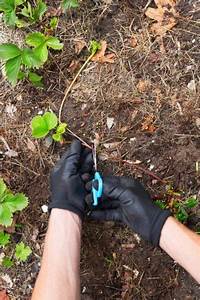Written by Luke Miller and published on https://www.familyhandyman.com/
With Earth Day just around the corner, tree planting is on the horizon for many home and property owners. Did you know that the best way to ensure your new tree’s long-term health and happiness is with a good start? In this article, we’ll explain how to avoid the most common tree planting mistakes.
When it comes to tree planting, there is a right way and a wrong way. Improper planting methods may set your tree up for poor growth and future structural problems. Following proper methods will allow it to reach its full potential and ultimately, require less maintenance and troubleshooting later on.
Table of Contents
Don’t Make These Mistakes When Planting a Tree
Reap rewards from your investment of time and money by planting a tree correctly. Avoid these costly mistakes—all of which will impede, if not kill, a tree.
1 / 10
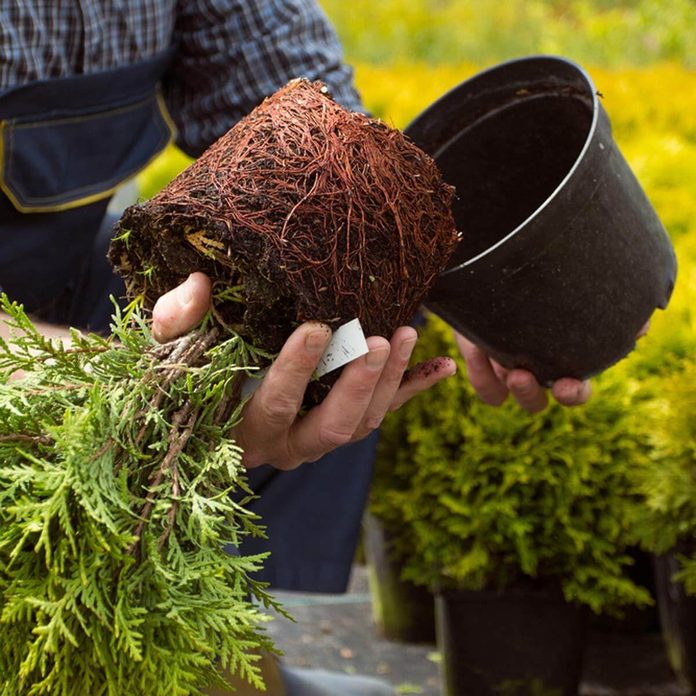
Rootbound Plants
Plants that have been grown in pots for too long become rootbound. This is particularly problematic with trees and shrubs because the roots circle around and fail to spread out and anchor the plant. Then as they grow taller, trees are prone to tipping over in a windstorm, especially after a heavy rain softens the ground. Avoid the problem by cutting the roots before planting. Cut into four equidistant sections of the root ball to free up the roots and encourage them to grow outward, then cut an X in the bottom of the rootball.
2 / 10

Balled-and-Burlapped Trees
Larger trees and shrubs are often sold in balled-and-burlapped form, also known as B&B. Natural burlap is biodegradeable and will break down over time. But it is still important to remove the rope and metal basket surrounding the burlap. Make sure none of the burlap remains above ground because it can wick moisture from the roots. Treated burlap (look for green coloration) breaks down more slowly, so it should be removed if you can do so without breaking up the root ball. If that is a concern, push the treated burlap away from the sides of the root ball when planting. Plastic burlap should be removed altogether because it won’t break down at all.
3 / 10
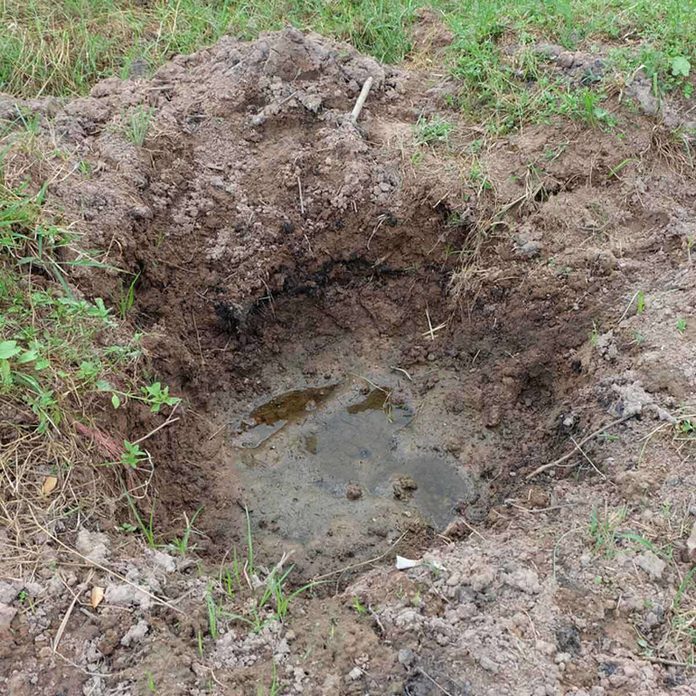
Poorly Drained Soil
While there are some species of trees that will accept such conditions (think the bald cypress of Southern swamps), poorly drained soil is a death knell for most trees. One way to test the planting site is to observe it after rain. Are their puddles? If so, that is not a good sign. You can also dig a test hole, fill it to the top with water and let it drain. If it takes 15 minutes or more to drain the hole, move on to another site.
4 / 10
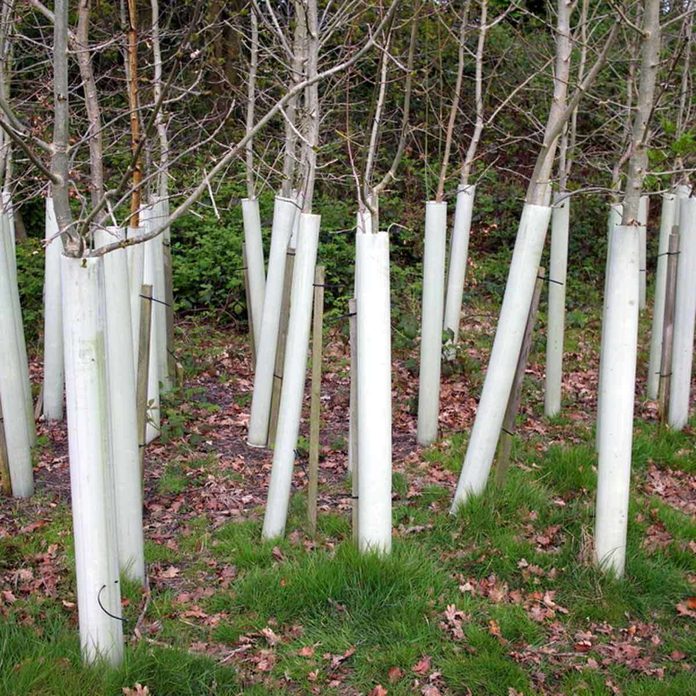
Planting Too Closely
While most homeowners are unlikely to go to this extreme, the photo does emphasize the pitfalls of planting trees too closely together. They’ll grow spindly, crowd each other and all suffer as a result. Of course, you can plant an odd number of trees, say 3 or 5, in a small makeshift grove. That actually looks good, especially when planted with aspens, birch or other light-barked species. But give them 5 or 10 feet of space so they have a chance to gain some size.
5 / 10
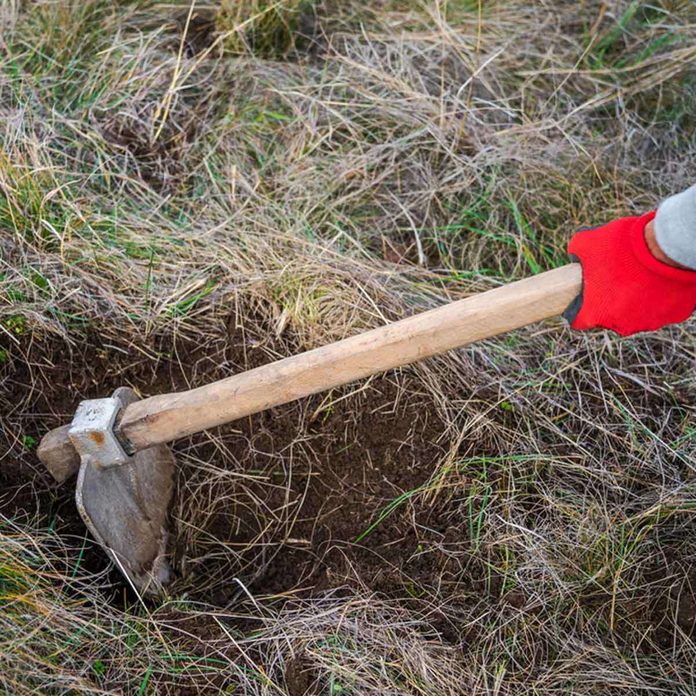
Grassy Competition
They say competition is a good thing, but that’s not the case with trees. Grasses in particular can be a great impediment to growth. Some uncut orchard grasses actually release an aleopathic chemical that slows or even halts the growth of woody plants. Remove the grass and keep the base of the tree free of competing plants out to the dripline (the outer extent of the canopy). Trees will grow faster and be healthier with a mulch of wood chips or, even better, compost.
6 / 10
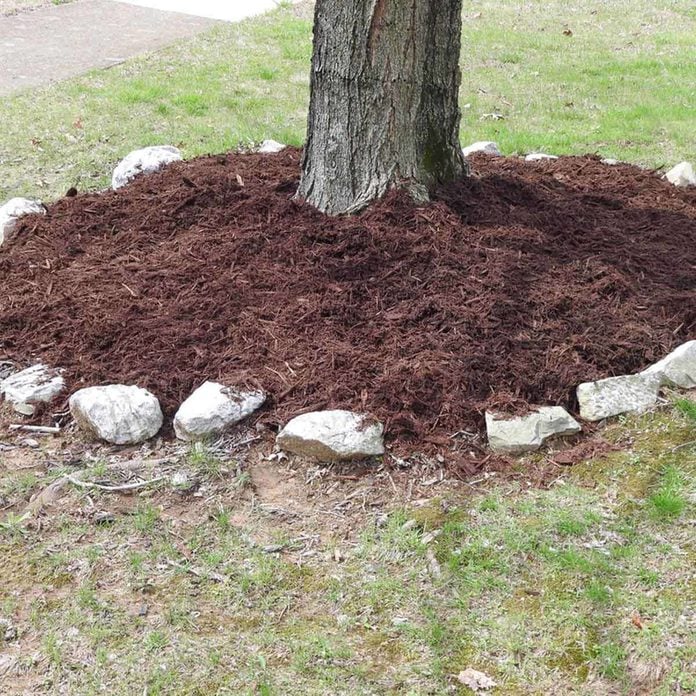
Too Much Mulch
Speaking of mulch, don’t put it on too heavily because you’ll smother roots. About 2 or 3 inches is all that’s needed. And be sure to keep it away from the trunk of the tree. Some misguided landscapers actually pile it against the trunk, creating a volcano effect. This traps moisture against the bark and leads to rot and eventually insect infestation. Keep mulch a good 3 to 5 inches away from the base of the tree.
7 / 10

Planting Too Shallow
Plant trees at the same height they grew in the nursery. Remove them from their pots, brush off any loose mulch, and look for where the base of the trunk starts to taper. That taper should be just above soil level after planting. Some landscapers intentionally plant higher on poorly drained sites. But frankly, they shouldn’t be planting on that site unless they have a water-loving species—in which case there’s no need to alter the planting height at all. Trees planted too shallow will usually survive, but they will be slowed down. And when erosion occurs, valuable feeder roots are destroyed, further diminishing the tree’s performance.
8 / 10
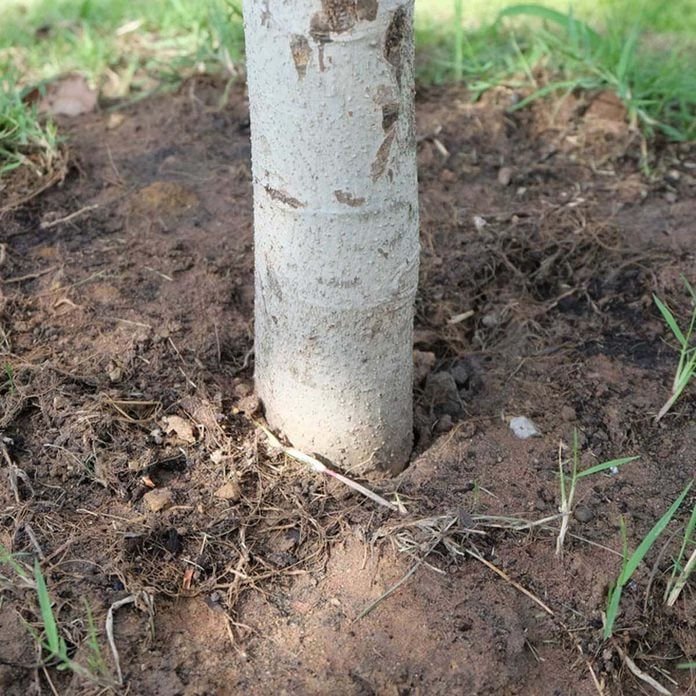
Planting Too Deep
Planting too shallow may slow a tree down and weaken it; planting too deeply can kill it. Note the stem on this young tree. It is perfectly cylindrical from top to bottom. There is no taper at the base where the tree transitions from trunk to roots. That tapered base is buried. Some bottomland species, such as cottonwood and silver maple, will accept this treatment with no complaint. They have evolved to deal with silt left at their base when rivers flood. But most species will suffer and eventually die. Make sure the telltale taper of a tree trunk is visible after planting.
9 / 10

Amending Soil
At one time, this was accepted advice: amend the soil with compost, peat moss and other additives when backfilling a newly planted tree. The problem is, if surrounding soil is poor, tree roots end up staying in their “comfort zone,” where the living is good. They don’t have incentive to spread out and anchor the plant. Also, a heavily amended planting hole acts as a sponge, collecting excess water when surrounded by heavy, nonporous clay. If you are going to amend the soil, amend a much larger area—at least 5 to 6 feet.
10 / 10
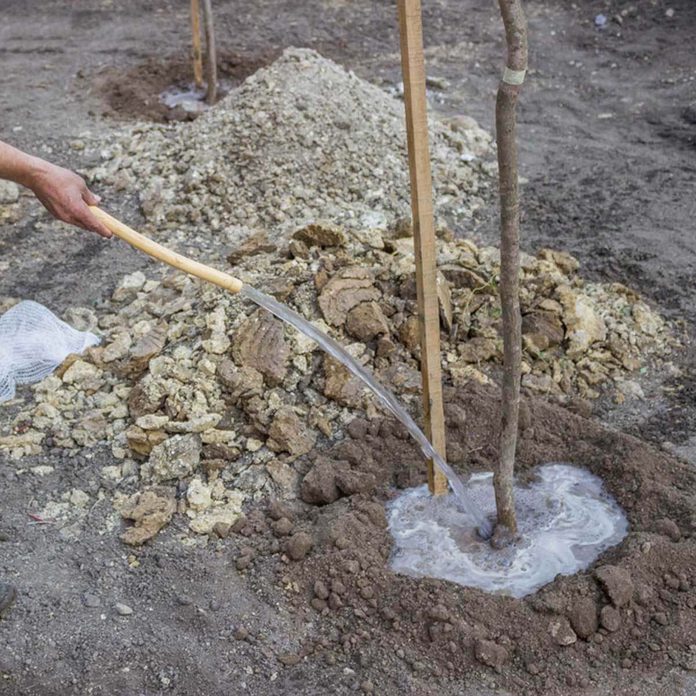
Not Enough Water
Insufficient watering is probably the number one reason newly planted trees don’t survive. Water deeply after planting and weekly after that the first year or two. Leave a basin around the tree to funnel water to the roots. A newly planted tree needs at least 5 gallons of water per week. A simple way to ensure this is to drill a couple small holes at the base of a plastic 5-gallon bucket. Fill the bucket with water weekly and let it slowly drain into the basin surrounding the tree.
Original post here https://www.familyhandyman.com/list/dont-make-these-mistakes-when-planting-a-tree/.

